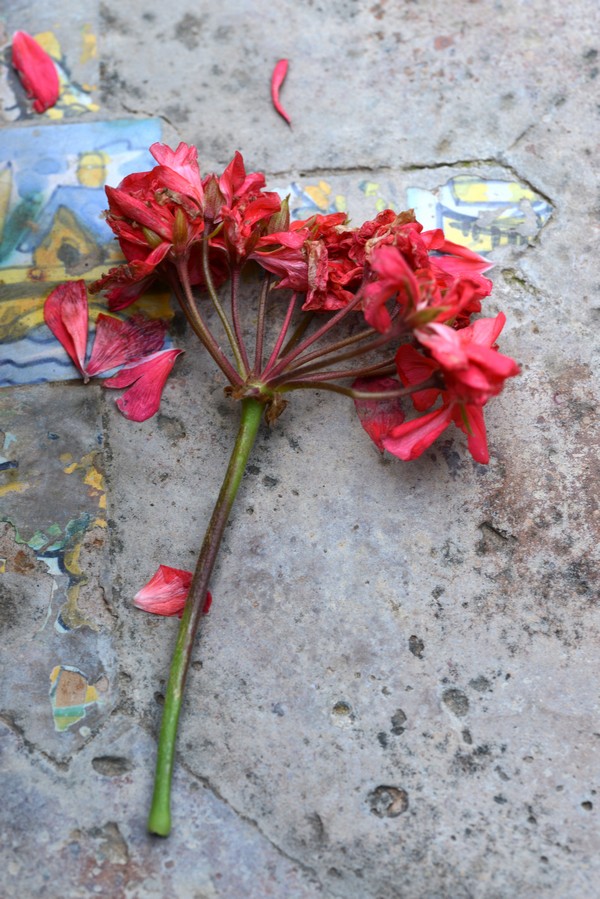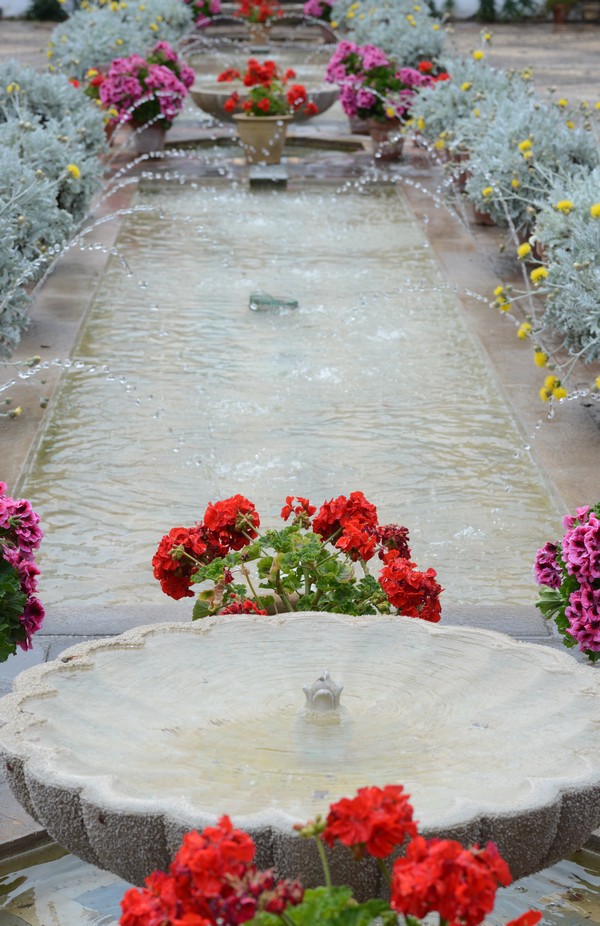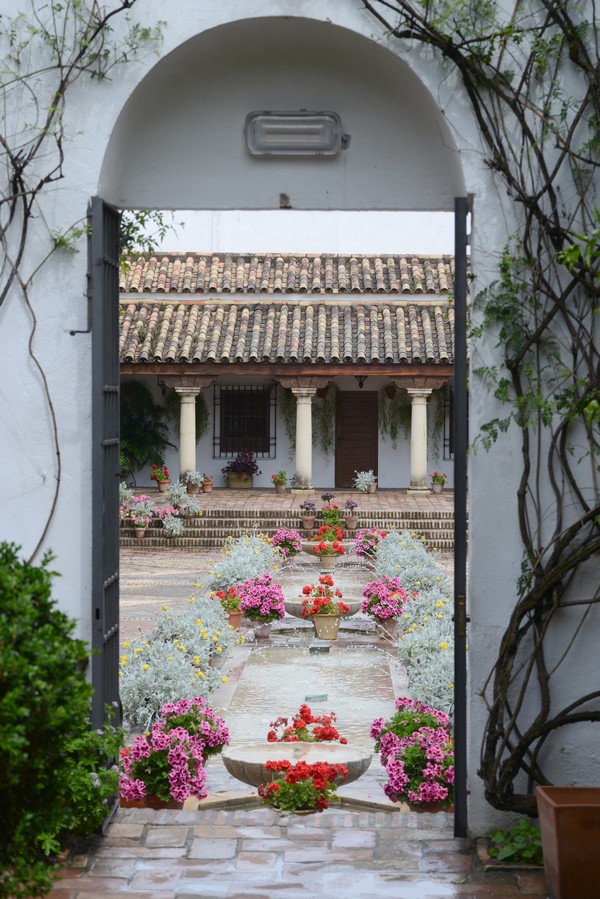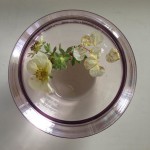Have updated my 'books' page just now - done a lot of reading in the…
Culture
And after nature, culture! Great day trip to Cordoba – saw the Mezquita, of course, and went to the best museum ever: the Palacio de Viana, also known as the Courtyard Museum. A complex of buildings and courtyards, it is one of the loveliest places I’ve ever visited. Going from one garden room to the next, one has an impression of timelesness. Which is, of course, nonsense – nothing shows the progress of time better than a garden.
Such geraniums! It does not become us poor mortals to be vain—but, really, my geraniums! (Mary Mitford, Our Village)

Question: what did the Spanish do for colour before geraniums were introduced? Their villages, churches and houses are whitewashed, with blue and ochre accents and colourful tiles. Predominantly white, though. I checked – the first geraniums were imported from South Africa to Europe in the 17th century – which is way earlier than I expected. They are easily propagated from cuttings, and love living in pots, so the triumphal march of the geranium through Europe must have been swift and decisive.

Check the history of pelargonium here : The first plant to reach Europe was probably brought to the Leiden botanical garden already before 1600. From there, it passed to France and in 1631, the Englishman John Tradescant obtained a few seeds from Rene Morin in Paris. Since the plant came from a trip to the East, it was considered to originate in India. In 1672, the Dutchman Paul Hermann was probably the first botanist to collect pelargoniums in southern Africa and sent seeds to Jacob Breyne, who illustrated a few species in 1678. On return, Hermann devoted his time to the garden of Leyden. Thus some plants reached the botanical garden of Amsterdam, where Jan Commelin described a few species and later his son Caspar a dozen or so more, all before 1710.
And here : From Leiden the exotic beauties spread to various other botanical gardens in the Netherlands. In the 18th century they could be found in botanical gardens throughout Europe. The nobility and prosperous urbanites discovered these lovely flowers and cultivated them in their gardens and greenhouses. Right from the start, the pelargonium was confused with the geranium. It was not until the end of the 18th century that it was allocated to the botanical genus “Pelargonium”. Nevertheless, to this day the correct term Pelargonium has not succeeded in replacing the name geranium. In the 19th century pelargoniums were flourishing all across Europe. This resulted in countless varieties with a range of different colours, growth patterns and leaf shapes. In 1852 the plant had achieved such a high level of recognition that it was even illustrated as a trend flower in German botanical magazine “Gartenflora”. At first the pelargonium was predominantly seen in towns and cities. It later became the typical balcony decoration for country cottages after rich urbanites and their servants began taking cuttings with them to their country estates.

| « Faded glory | <-- previous post | next post --> | Villa Augustus » |
|---|







